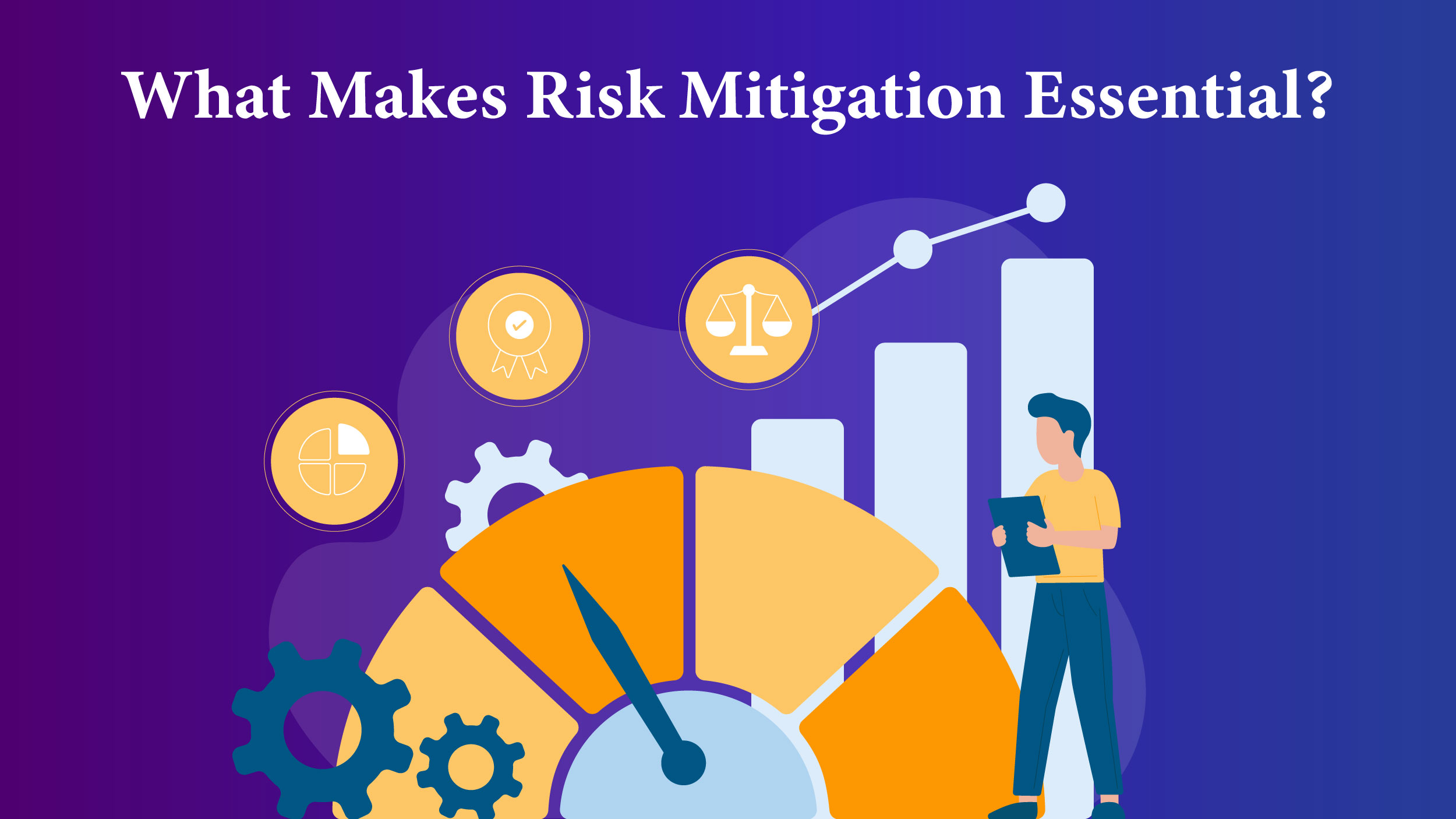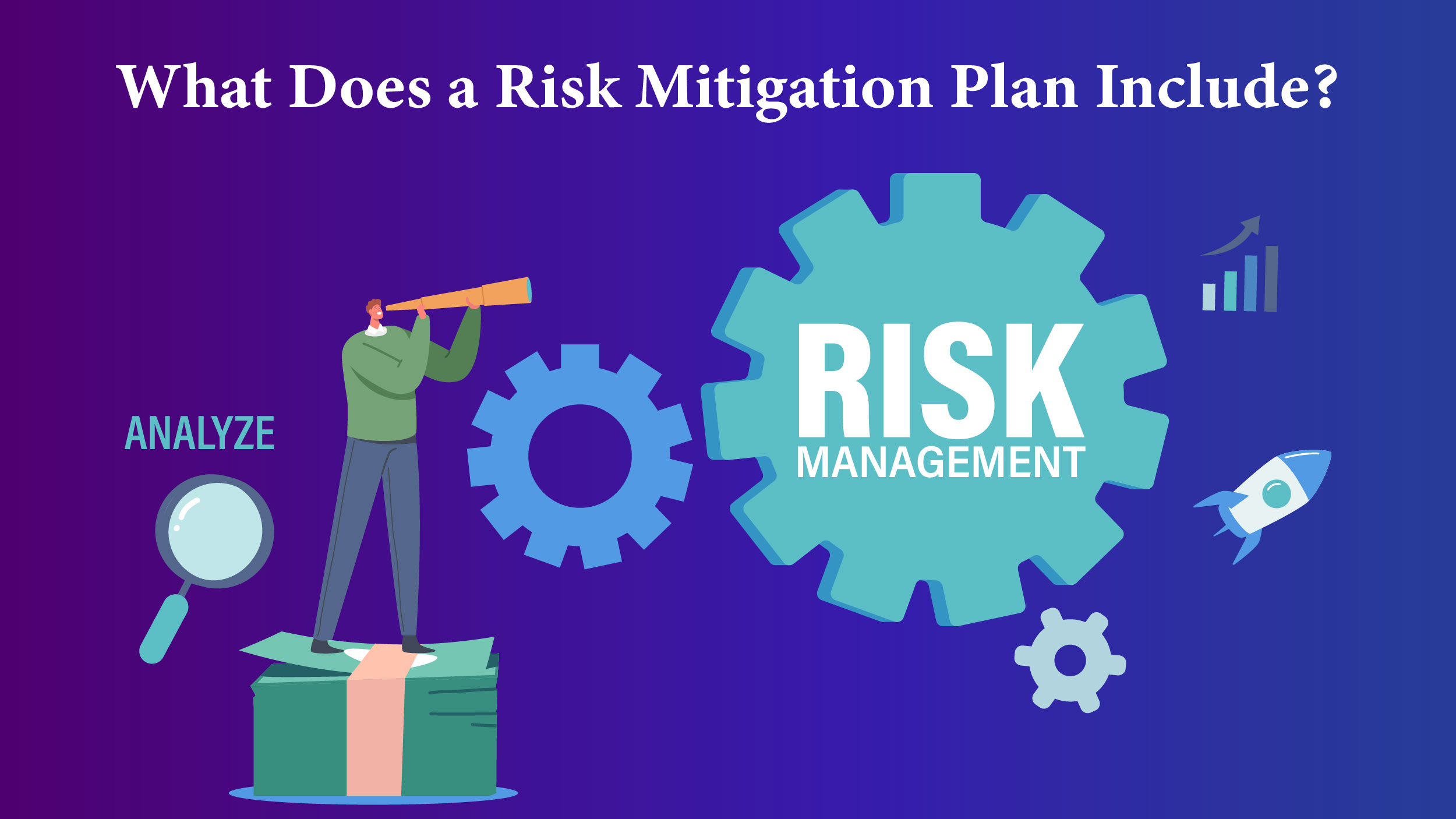We’ve all got a knack for sizing up risks; it’s just part of how we’re wired to stay afloat. But here’s the thing: playing it safe (or as the pros call it, risk mitigation) can make or break a business.
Now, picture this: leaders charging ahead without a glance back at their blunders or leaping into every opportunity without considering the fallout. That sounds like a disaster waiting to happen, wouldn’t you agree?
To really dial down risk in a company, it’s crucial to get a grip on the different types of risk and how to keep them at bay.
In this article, we’re going to break down various risk-busting methods and strategies to future-proof your business. Let’s dive in.
What is Risk Mitigation?
The technique a corporation uses to lessen its exposure to the many dangers it can encounter is known as risk mitigation. Businesses obviously confront a variety of risks, some of which can result in significant disruption or monetary loss. A wise action that every business should take to prevent such unwelcome consequences is mitigation.
In a broader sense, risk management might be considered one of the processes in risk management, which also includes risk identification, risk modeling, and analysis.
In addition to assessing and analyzing the risks an organization encounters, the organization must take action to mitigate those risks. To cope with the many types of risk, a corporation can implement a number of risk mitigation strategies, such as risk avoidance and risk reduction.
What Makes Risk Mitigation Essential?

Understanding specific risks and hazards, recognizing their existence, and taking the necessary precautions to lessen their consequences in the event that they materialize are all steps in the process of risk management. It is an essential step in the risk management process that helps an organization get ready for potential risks to its systems and procedures.
Risk mitigation concentrates on minimizing the impact of foreseeable dangers rather than eradicating them. Natural disasters and other hazards that could affect production and other operations can be included in this.
These are threats that a business cannot avert. Risk management exists to ensure that, should these occur, the business will take the necessary precautions to limit the harm to the organization.
Types of Risk Mitigation
Risk reduction doesn’t have a one-size-fits-all approach. Each organization has its own perspective on the matter and method for lessening the impact of specific inescapable risks. However, a few of the methods frequently employed for risk reduction include:
● Risk Transfer
This entails dividing up the allocation of risk among many parties. For instance, if a company purchases goods or materials from a third party before dispersing them, it can transfer all liability for those specific goods to the third party.
● Risk Acceptance
For a predetermined amount of time, an organization must tolerate a specific risk and the hazards it poses. The company might use this time to concentrate on reducing other risks and dangers.
● Risk Avoidance
An organization employs this tactic when the costs associated with particular hazards are too high for them to bear. In certain situations, it may be advisable for a company to take precautions to reduce or completely prevent the risk.
For instance, risk avoidance would entail refraining from using a particular method if it was determined to be harmful to worker safety and other factors.
● Risk Monitoring
To identify risks as they arise, it is necessary to maintain a close watch on various teams and procedures. After that, actions can be taken to lessen the impact of these risks.
What Does a Risk Mitigation Plan Include?

Identifying anticipated hazards, prioritizing risk management preparation & responses and monitoring, and updating the risk management plan are crucial elements of an effective risk mitigation plan.
- Identify possible risk events – Based on their location and possible risks to data, operations, and staff, a company should take natural threats into account.
- Make a risk assessment – Consider the likelihood of the dangers you’ve identified. What steps, safeguards, and procedures are required to lessen the impact of a danger materializing are included in risk assessment.
- Prioritize risks – Decide how serious they are and how they might affect the procedure. Ranking risks aids a company in deciding how many resources to allocate to each potential hazard.
- Track risks – Keep an eye on risks as they evolve and assess how well the risk mitigation plan addresses them.
- Implement actions and assess progress – Always assess the risk management plan’s capacity to manage new threats and make necessary revisions.
Risk Mitigation Strategies & Instances
Each organization’s risk reduction strategy will differ slightly. Instead of stressing over KRIs (Key Risk Indicators) that don’t fit your company profile, your business should build risk management procedures that address your specific needs.
Here are some go-to strategies you can use to tackle the various curveballs your business might throw your way.
1. Challenge the risk
Strategy: Identify and track risks early. Let them develop if they’re manageable, but intervene before they become significant hazards.
Example: While weather forecasts aren’t flawless, snowstorms are quite predictable. To manage the risk, stay open before a storm hits and close in time for employees to get home safely.
2. Prioritize your risks
Strategy: One hazard can bring various risks. Prioritize and tackle them by importance to minimize the impact on your business and team.
Example: For hospital continuity planners in New Orleans, hurricanes are the top concern. To streamline emergency decisions, prioritize patient care and staff safety first. Next, protect costly and vital equipment before considering less critical items like office furniture.
3. Isolate the risk
Strategy: Businesses undertake essential activities that can be risky. While you can’t change the risk, isolating it from other operations helps lessen potential impacts.
Example: Cybersecurity’s bedrock is risk isolation. A public server is vulnerable, and open to anyone trying to breach it. Yet, you can reduce this risk by shielding essential resources like databases and file servers behind a firewall.
4. Buffer the risk
Strategy: Enhance resources, be it time, finances, or personnel, to bolster risk mitigation efforts. This provides a safeguard against adverse outcomes and streamlines tasks.
Example: Hoisting heavy equipment with a crane onto a roof poses risks to both people and property, but they can be mitigated. Add extra time, use trained spotters on the ground and roof, give clear instructions, and have enough hands to safely guide the equipment.
5. Quantify the risk
Strategy: Every risk has a cost and a potential payoff. To decide if it’s worth it, you’ll need to weigh and compare both sides. Keep in mind that the risk and reward can change as you go.
Example: For pizzerias, deliveries are essential for profits. Sending a driver out on a rainy night for a full round of deliveries makes sense — good revenue, low risk if they drive carefully. However, sending them out for just one delivery in a snowstorm is a bad idea—low reward, high risk.
6. Monitor the risk
Strategy: Keep in mind that hazards and their risks can change. Employ a two-way communication system to stay updated on conditions impacting your staff and facilities, send out crucial updates, and address requests promptly.
Example: In times of civil unrest, staff in restaurants, coffee shops, and retail stores need quick updates. A two-way system helps you stay in the loop and offer immediate guidance on safety measures.
7. Develop contingency plans
Strategy: Effective risk mitigation is key. No matter how hard you try, unexpected challenges may still come your way. It’s crucial to consider potential consequences and how a backup plan can further enhance risk management.
Example: Contingency plans are crucial in travel risk management. They provide backup options for regions prone to natural disasters or unexpected changes, reducing trip risks.
8. Capitalize on proven approaches
Strategy: When facing risks, you do not need to reinvent the wheel. Use established best practices from organizations like the Occupational Safety and Health Administration (OSHA) and the International Organization for Standards (ISO) for common operational risks.
Example: Construction tech evolves, but core risks remain. OSHA offers standards, training, and resources to mitigate them. No need for extensive research or trial and error.
Risk Mitigation Best Practices
Here are some top tips for risk management in addition to the above-mentioned risk-handling options:
- Formulating mitigation plans: Risk acceptance and risk avoidance are handled by decision-makers. Since risk management requires teamwork, the approach ought to be a shared goal. Leaders must accept that hazards can reappear, necessitating readiness.
- Mitigation plan details: Choose a risk manager with the resources, expertise, and power to carry out risk mitigation strategies. The plan proposes a fix for:
- What steps need to be taken?
- When is the deadline for these actions?
- Who is tasked with carrying out the actions?
- What resources will be necessary?
- How will the action lower the likelihood or impact of the risk?
- Create a backup plan: High risks may need having a backup plan in place if the first course of action is insufficient to mitigate the risk. Include a deadline or trigger for adopting a backup plan as well. A situation like this would require moving operations to a new location.
- Check the status of every action: Decide when each stage needs to be carried out and finished.
- Risk assessment: An organization has a responsibility to monitor changing threats and adjust its strategy and operations as appropriate. Additionally, it needs to keep reevaluating its risk exposure.
Final Thoughts
Any organization must continually strive to reduce risk. Your risk management strategy will need to adapt as operations change and new threats emerge.
You can engage with key stakeholders to teach your team, track the success of your risk mitigation plan, and iteratively improve it by using the techniques described in this article. Although there will always be risks in life, with enough preparation and practice, you can be prepared to combat any dangers to your team.




